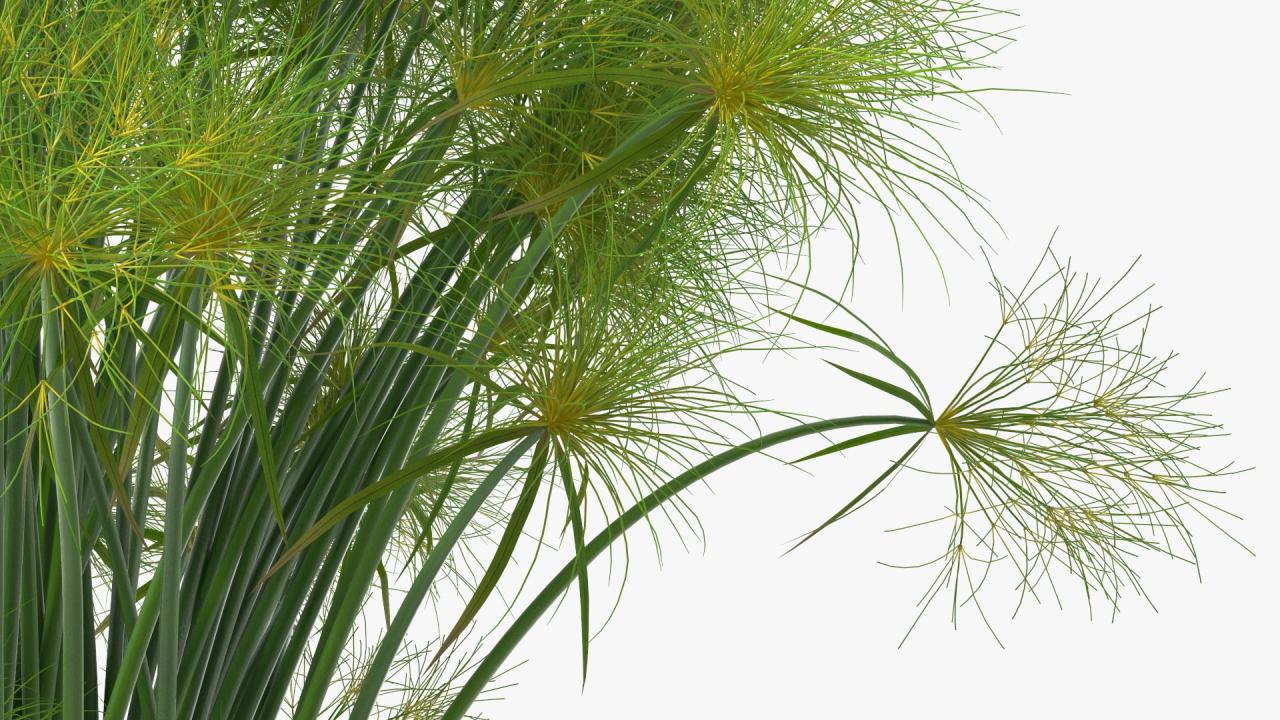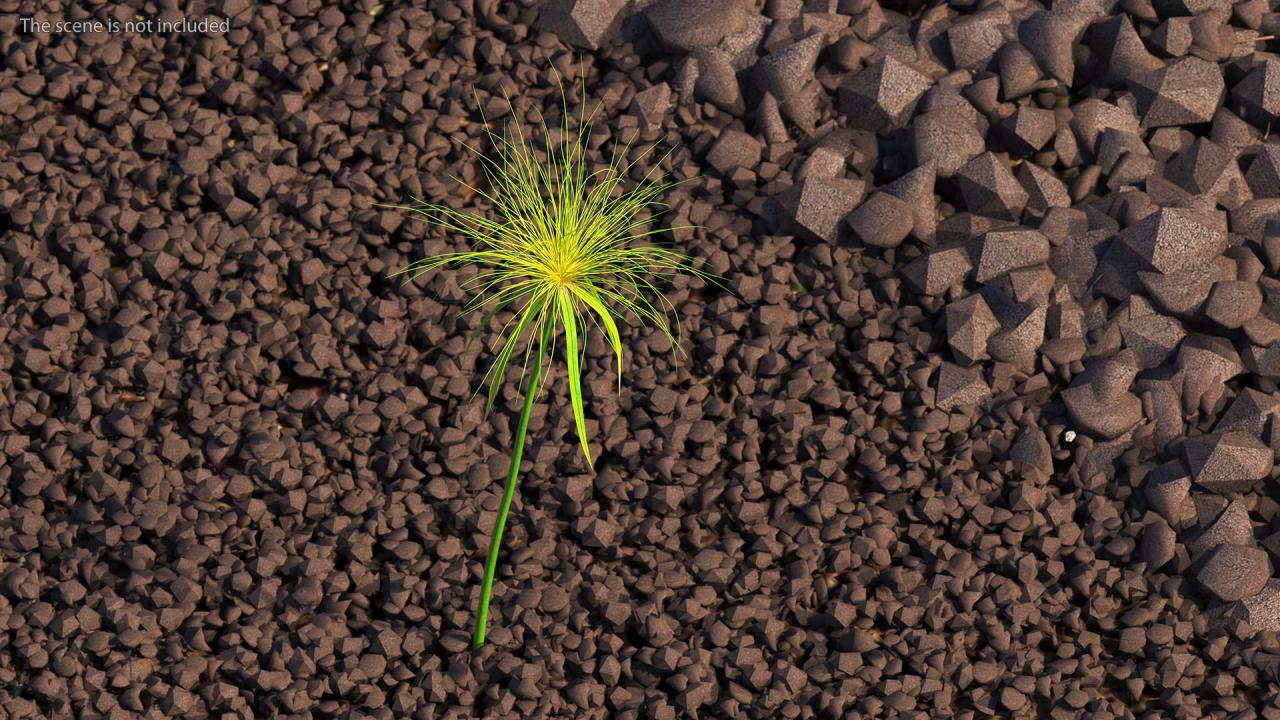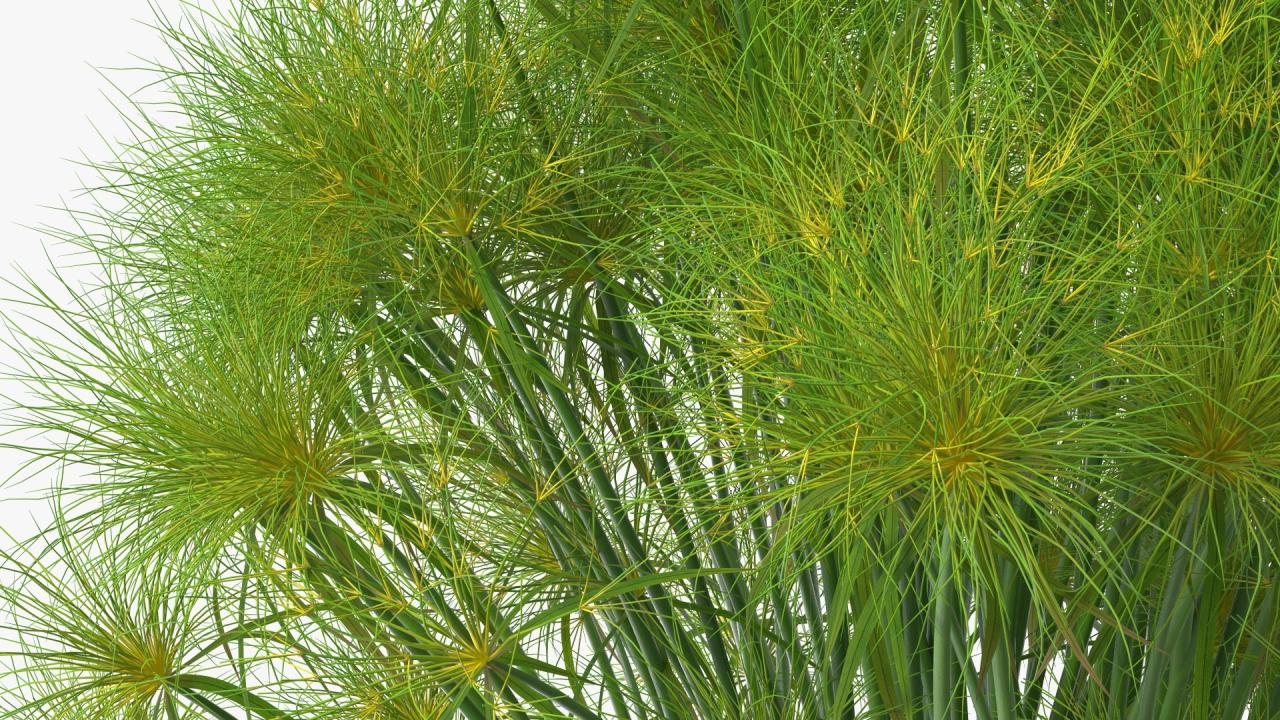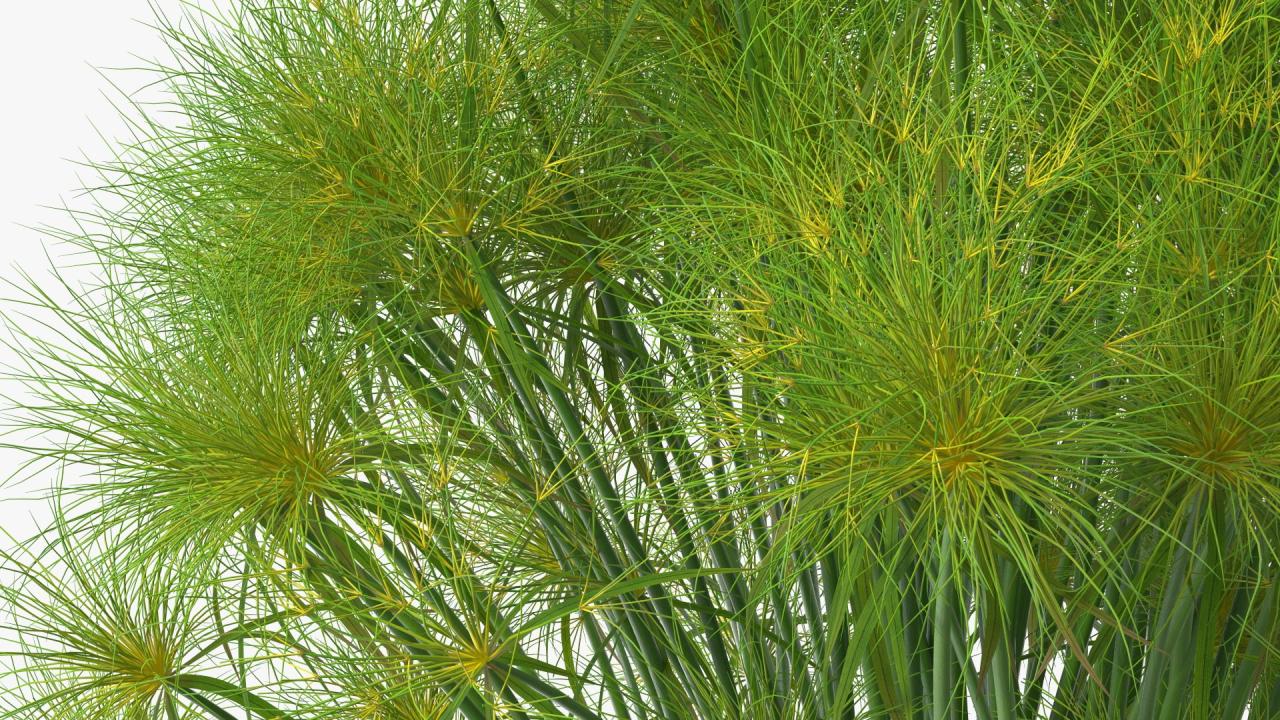How to Incorporate Papyrus Plant into Your Garden Design for Maximum Beauty: Imagine a garden oasis where the graceful, feathery fronds of the papyrus plant dance in the breeze, creating a tranquil and exotic atmosphere. This ancient plant, with its rich history and undeniable charm, can transform your garden into a breathtaking sanctuary, evoking a sense of serenity and natural beauty.
Whether you’re dreaming of a water garden, a tropical paradise, or a modern landscape, the papyrus plant offers a versatile and captivating addition, capable of enhancing any garden design.
This guide will explore the fascinating world of the papyrus plant, from its origins and unique characteristics to its practical application in garden design. We’ll delve into the different varieties available, providing insights on choosing the perfect papyrus for your space and climate.
Discover the secrets to successful planting and growing, along with expert tips on incorporating this majestic plant into your garden design. Prepare to be inspired by creative ideas and practical advice that will empower you to create a stunning garden that reflects your individual style and celebrates the beauty of the papyrus plant.
Introduction to Papyrus Plant
The papyrus plant, scientifically known asCyperus papyrus*, is a remarkable aquatic plant that adds a touch of ancient charm and tropical elegance to any garden setting. Its unique characteristics, historical significance, and versatility make it a captivating choice for both experienced and novice gardeners.
Papyrus is native to the wetlands and marshes of Africa, particularly the Nile River Valley. Its tall, slender stems, often reaching heights of 10 to 15 feet, rise gracefully from the water’s edge, topped with feathery, umbrella-like clusters of green leaves.
The plant’s distinctive form and vibrant green foliage create a visually striking focal point in any landscape.
Historical Significance of Papyrus
Papyrus holds immense historical and cultural significance, particularly in ancient Egypt. The Egyptians ingeniously utilized the plant’s fibrous stems to create a durable writing material known as “papyrus,” which revolutionized communication and record-keeping in the ancient world. Papyrus scrolls served as the primary medium for writing, preserving literary works, religious texts, and historical documents.
The plant’s importance extended beyond writing, as it was also used for making mats, baskets, sandals, and even boats.
Versatility in Landscaping
The papyrus plant’s versatility extends beyond its historical significance, making it a popular choice for various landscaping applications.
Papyrus in Water Gardens
Papyrus thrives in water gardens, creating a sense of natural beauty and tranquility. Its elegant stems and feathery foliage create a striking contrast against the water’s surface, attracting birds and other wildlife. Papyrus can be planted in containers submerged in ponds or directly in shallow water, adding a touch of tropical charm to the water garden.
Papyrus in Tropical Gardens
Papyrus is a perfect addition to tropical gardens, where its lush foliage and towering stems create a sense of exoticism. The plant thrives in warm, humid climates and prefers full sun to partial shade. Its vibrant green color complements other tropical plants, creating a visually stunning landscape.
Papyrus as a Houseplant
Surprisingly, papyrus can also be grown as a houseplant, adding a touch of nature to indoor spaces. It prefers bright, indirect light and moist soil. While it may not reach the same heights as outdoor specimens, it can still thrive in a container, providing a unique and captivating addition to the home.
Choosing the Right Papyrus Variety

Papyrus plants come in various shapes and sizes, each with unique characteristics that make them suitable for different garden settings. Choosing the right variety for your garden is crucial for maximizing beauty and ensuring optimal growth.
Popular Papyrus Varieties
The two most popular types of papyrus plants are Cyperus papyrus and Cyperus alternifolius. These varieties are distinguished by their growth habits, size, and visual appeal.
- Cyperus papyrusis the classic papyrus plant, often referred to as the “Egyptian papyrus.” It is known for its tall, upright stalks that can reach heights of 10 to 15 feet. Its feathery, umbrella-like flower heads are a stunning visual element.
Creating a stunning water garden design often involves incorporating the majestic papyrus plant, known for its towering plumes and tropical ambiance. But what if you want to add even more greenery to your landscape? Consider the versatility of ivy, a plant that can easily be multiplied through propagation, as outlined in How to Turn One Ivy Plant into Many: The Ultimate Propagation Guide.
With a few simple techniques, you can quickly establish a thriving colony of ivy, creating a lush backdrop for your papyrus and enhancing the overall beauty of your garden.
Cyperus papyrus thrives in full sun and moist soil, making it ideal for water gardens or near ponds.
- Cyperus alternifoliusis a smaller variety of papyrus, commonly known as the “umbrella plant” due to its distinctive, umbrella-shaped flower heads. It typically grows to a height of 3 to 5 feet. Cyperus alternifolius is more adaptable to different growing conditions and can tolerate partial shade.
Its smaller size makes it suitable for containers or smaller gardens.
Choosing the Right Papyrus Variety for Your Garden
The best papyrus variety for your garden depends on several factors, including your garden size, climate, and desired aesthetic.
- Garden size:If you have a large garden with ample space, Cyperus papyrus is a magnificent choice. Its towering stalks create a dramatic focal point and add a tropical feel. For smaller gardens or containers, Cyperus alternifolius is a better option due to its compact size.
- Climate:Both Cyperus papyrus and Cyperus alternifolius prefer warm, humid climates. However, Cyperus alternifolius is slightly more tolerant of colder temperatures and can survive in USDA hardiness zones 8-10. In colder climates, consider growing papyrus plants in containers that can be moved indoors during the winter.
- Desired aesthetic:If you want a dramatic, tropical look, Cyperus papyrus is the way to go. Its tall stalks and feathery flower heads create a striking visual impact. If you prefer a more delicate and understated look, Cyperus alternifolius is a good choice.
Its smaller size and umbrella-shaped flower heads provide a softer and more elegant touch.
Planting and Growing Papyrus

Papyrus plants are relatively easy to grow, and with the right conditions, they can thrive in your garden, adding a touch of tropical elegance. To ensure your papyrus plant flourishes, understanding its planting and growing requirements is crucial.
Choosing the Right Location
The location you choose for your papyrus plant significantly impacts its growth. Papyrus prefers full sun to partial shade, meaning it needs at least six hours of direct sunlight daily. However, it can tolerate some shade, especially in hot climates.
When selecting a location, consider the following:
- Ensure the spot receives adequate sunlight, ideally six hours or more daily.
- Choose a location with protection from strong winds, as these can damage the plant’s delicate stems.
- Consider the plant’s mature size and ensure it has enough space to grow without overcrowding.
Soil Preparation
Papyrus thrives in moist, well-drained soil. The soil should be rich in organic matter to provide essential nutrients. Here’s how to prepare the soil:
- Dig a hole twice as wide and as deep as the root ball of the papyrus plant.
- Amend the soil with compost or well-rotted manure to improve drainage and fertility.
- Mix the amended soil thoroughly to ensure even distribution of nutrients.
Planting Depth
When planting your papyrus, ensure the top of the root ball is level with the soil surface. Planting too deep can lead to root rot, while planting too shallow can expose the roots to drying out.
- Place the papyrus plant in the prepared hole, ensuring the top of the root ball is level with the soil surface.
- Backfill the hole with the amended soil, gently pressing it around the roots to ensure good contact.
- Water the plant thoroughly after planting to settle the soil and help the roots establish.
Sunlight Requirements
Papyrus thrives in full sun to partial shade. It needs at least six hours of direct sunlight daily for optimal growth. However, in hot climates, it may benefit from some afternoon shade to prevent scorching.
- Papyrus can tolerate some shade, but it will grow best in full sun.
- In hot climates, provide some afternoon shade to prevent the leaves from scorching.
- Monitor the plant’s growth and adjust its location if necessary to ensure it receives adequate sunlight.
Water Needs
Papyrus is a water-loving plant and needs consistent moisture. It thrives in wet conditions and can even tolerate standing water. However, it’s essential to ensure proper drainage to prevent root rot.
- Water the plant deeply and frequently, especially during hot and dry periods.
- Allow the top inch of soil to dry out slightly between waterings to prevent overwatering.
- Consider using a drip irrigation system to provide consistent moisture without overwatering.
Temperature Preferences
Papyrus is a tropical plant and prefers warm temperatures. It can tolerate some frost but is best grown in areas with mild winters.
- Papyrus thrives in temperatures between 65°F and 85°F (18°C and 29°C).
- In colder climates, protect the plant from frost by bringing it indoors or covering it with a frost blanket.
- During the winter months, reduce watering frequency to allow the soil to dry out slightly between waterings.
Drainage
Proper drainage is essential for papyrus plants to prevent root rot. If the soil is too compacted or the location has poor drainage, water can accumulate around the roots, leading to root rot and plant death.
- Ensure the soil is well-drained to prevent waterlogging.
- If the soil is compacted, amend it with compost or well-rotted manure to improve drainage.
- Consider planting the papyrus in a raised bed or container to improve drainage.
Preventing Root Rot, How to Incorporate Papyrus Plant into Your Garden Design for Maximum Beauty
Root rot is a common problem for papyrus plants, especially if they are overwatered or planted in poorly drained soil. Here are some tips to prevent root rot:
- Ensure the soil is well-drained and avoid overwatering.
- Allow the top inch of soil to dry out slightly between waterings.
- If you notice signs of root rot, such as yellowing leaves or wilting, repot the plant in fresh, well-drained soil.
Incorporating Papyrus into Garden Design
Papyrus plants, with their striking architectural forms and lush foliage, can add a touch of tropical elegance and visual interest to any garden design. Whether you’re creating a tranquil water garden, a vibrant tropical oasis, or a sleek modern landscape, papyrus plants offer a unique versatility that allows them to seamlessly integrate into diverse styles.
Utilizing Papyrus in Various Garden Designs
Papyrus plants can be incorporated into various garden designs to create captivating visual effects. Their unique growth habit, with tall, feathery stems and clusters of lush foliage, allows them to serve as focal points, vertical accents, or natural screens.
- Water Gardens:Papyrus thrives in moist environments and is a natural choice for water gardens. They can be planted directly in the water’s edge, creating a lush backdrop for water lilies, lotus flowers, and other aquatic plants. Their feathery foliage provides a graceful contrast to the smooth surfaces of water features, adding texture and movement to the design.
- Tropical Gardens:Papyrus is a quintessential element of tropical gardens, evoking the lush landscapes of the tropics. They can be combined with other tropical plants like banana trees, ginger lilies, and ferns to create a vibrant and exotic atmosphere. Their towering forms add a sense of drama and grandeur to the design.
- Modern Landscapes:Papyrus plants can also be incorporated into modern landscapes, where their clean lines and minimalist forms complement the sleek and geometric design elements. They can be used as focal points in minimalist gardens or as vertical accents against a backdrop of concrete and stone.
Their feathery foliage provides a soft contrast to the hard edges of modern architecture.
Employing Papyrus as Focal Points, Vertical Accents, and Natural Screens
Papyrus plants can be strategically placed within a garden design to create various visual effects.
- Focal Points:Papyrus plants can serve as striking focal points in a garden design, drawing the eye to a particular area. A single, large papyrus plant can be planted in a prominent location to create a sense of grandeur and draw attention to a specific area of the garden.
Adding a papyrus plant to your garden can create a dramatic focal point, especially when paired with water features. The plant’s unique texture and height can also provide a sense of privacy and seclusion. While you’re enjoying the visual appeal of your papyrus, consider exploring the culinary world with another plant, the perilla leaf, which adds a unique flavor to dishes.
Learn more about incorporating perilla leaf into your cooking with this helpful guide, How to Cook with Perilla Leaf: Tips for Creating Flavorful and Nutritious Dishes. Once you’ve mastered the art of cooking with perilla, you’ll be ready to create a garden oasis that delights both the eyes and the palate.
- Vertical Accents:Papyrus plants can be used to create vertical accents, adding height and dimension to a garden design. They can be planted in groups along walkways or paths, creating a sense of verticality and leading the eye upwards. Their feathery foliage can also provide a sense of movement and texture.
- Natural Screens:Papyrus plants can be used to create natural screens, providing privacy and creating a sense of enclosure within a garden. They can be planted in rows along property lines or around seating areas, providing a natural barrier from unwanted views.
Their dense foliage can also provide a sense of seclusion and tranquility.
Garden Design Styles and Papyrus Plant Choices
The following table highlights different garden design styles and their corresponding papyrus plant choices, emphasizing complementary plant pairings:
Garden Design Style |
Papyrus Plant Choice |
Complementary Plant Pairings |
|---|---|---|
Water Garden |
Cyperus papyrus (Common Papyrus) |
Water lilies, lotus flowers, cattails, water hyacinths |
Tropical Garden |
Cyperus alternifolius (Umbrella Papyrus) |
Banana trees, ginger lilies, ferns, heliconia |
Modern Landscape |
Cyperus haspan (Dwarf Papyrus) |
Ornamental grasses, succulents, Japanese maples, bamboo |
Mediterranean Garden |
Cyperus involucratus (Star Papyrus) |
Lavender, rosemary, olive trees, succulents |
Maintaining Papyrus Plants
Papyrus plants are relatively low-maintenance, but they do require some specific care to thrive. Understanding their needs for water, nutrients, and light will help you cultivate healthy and vibrant papyrus plants in your garden.
Watering Papyrus Plants
Papyrus plants are water-loving and thrive in moist conditions. They require regular watering, especially during hot weather. The soil should be kept consistently moist, but not waterlogged. It is important to ensure proper drainage to prevent root rot.
Fertilizing Papyrus Plants
Papyrus plants benefit from regular fertilization, particularly during the growing season. Use a balanced liquid fertilizer diluted to half strength every two weeks. Avoid over-fertilizing, as this can lead to root damage.
Pruning Papyrus Plants
Pruning is essential for maintaining the shape and health of papyrus plants. Regularly remove any dead or damaged leaves and stems. You can also prune back the plant to control its size and shape.
Pests and Diseases
Papyrus plants are generally resistant to pests and diseases. However, they can be susceptible to aphids, mealybugs, and spider mites. These pests can be controlled with insecticidal soap or neem oil. Fungal diseases, such as leaf spot, can also affect papyrus plants.
Proper watering and good air circulation can help prevent these diseases.
Winter Care for Papyrus Plants
Papyrus plants are not frost-tolerant and require protection during winter in colder climates. Bring potted plants indoors to a bright, cool location. If planted in the ground, cover the base of the plant with mulch or straw to protect the roots from frost damage.
You can also prune back the plant before winter to reduce its size and make it easier to manage indoors.
Creative Uses of Papyrus
Papyrus, with its rich history and versatile nature, offers more than just a beautiful addition to your garden. It’s a treasure trove of creative possibilities, extending beyond landscaping into the realm of crafts, papermaking, and even natural building materials. This section delves into the multifaceted uses of papyrus, exploring its cultural significance and inspiring you to unleash its creative potential.
Cultural Significance of Papyrus
Papyrus holds a significant place in various cultures around the world. Its historical importance is undeniable, particularly in ancient Egypt, where it served as a vital material for writing, art, and religious rituals. The Egyptians used papyrus to create scrolls, which were used to record their history, literature, and religious beliefs.
This practice played a crucial role in preserving their cultural heritage and knowledge. Beyond ancient Egypt, papyrus has also been used in other cultures for diverse purposes. In ancient Greece and Rome, papyrus was widely used for writing and documentation.
Its use extended beyond writing to crafting baskets, mats, and even sandals.
Papyrus in Art and Design
Papyrus has inspired artists and designers throughout history, finding its way into various art forms and design applications. Its natural texture and color lend themselves beautifully to various art projects, from intricate paper crafts to stunning floral arrangements.
Papyrus in Paper Crafts
Papyrus can be used to create a wide range of paper crafts, from delicate origami to intricate paper flowers. Its unique texture and natural color add a touch of elegance and sophistication to any project.
- Origami:Papyrus’s flexibility and strength make it an ideal material for origami, allowing for intricate folds and detailed designs.
- Paper Flowers:Papyrus can be easily shaped and colored to create lifelike paper flowers, adding a touch of natural beauty to any space.
- Paper Quilling:Papyrus can be rolled and shaped into delicate scrolls, creating intricate patterns and designs for cards, frames, and other decorative items.
Papyrus in Floral Arrangements
Papyrus adds a unique and natural touch to floral arrangements. Its tall, slender stems and feathery plumes provide a striking contrast to other flowers, creating a visually appealing and textural element.
- Centerpieces:Papyrus stems can be used as a base for floral arrangements, adding height and visual interest.
- Bouquets:Papyrus plumes can be incorporated into bouquets, adding texture and a touch of the wild.
- Dried Arrangements:Papyrus’s natural durability makes it suitable for dried floral arrangements, preserving its beauty for a long time.
Papyrus in DIY Crafts
Papyrus’s versatility extends to various DIY crafts, allowing you to create unique and personalized items for your home and garden.
- Wicker Baskets:Papyrus fibers can be woven into baskets, adding a touch of natural elegance to your home decor.
- Mats and Rugs:Papyrus fibers can be woven into mats and rugs, providing a durable and eco-friendly flooring option.
- Jewelry:Papyrus fibers can be used to create unique and handcrafted jewelry, adding a touch of natural beauty to your wardrobe.
Papyrus as a Building Material
Papyrus has been used as a natural building material for centuries, particularly in regions where wood is scarce. Its strength and durability make it a sustainable alternative to traditional building materials.
- Roofing:Papyrus mats can be used as a roofing material, providing insulation and protection from the elements.
- Walls:Papyrus panels can be used as a building material for walls, offering a natural and breathable option.
- Furniture:Papyrus can be woven into furniture, creating unique and eco-friendly pieces.
Final Conclusion: How To Incorporate Papyrus Plant Into Your Garden Design For Maximum Beauty

With its captivating beauty, rich history, and versatile nature, the papyrus plant offers a unique and rewarding addition to any garden. From creating a serene water feature to adding a touch of exotic charm, this ancient plant holds the power to transform your outdoor space into a captivating oasis.
By understanding the fundamentals of papyrus plant care, selecting the right variety, and incorporating it into your garden design with creativity, you can unlock its full potential and create a landscape that reflects your personal style and celebrates the beauty of nature.
Essential Questionnaire
What is the best time of year to plant papyrus?
The best time to plant papyrus is in the spring or early summer after the last frost. This allows the plant to establish itself before the colder weather arrives.
How often should I fertilize my papyrus plant?
Fertilize your papyrus plant every 2-4 weeks during the growing season with a balanced liquid fertilizer.
Can papyrus plants be grown indoors?
Yes, papyrus plants can be grown indoors in a bright location with indirect sunlight. Make sure to provide adequate drainage to prevent root rot.
What are some common pests and diseases that affect papyrus plants?
Common pests include aphids, spider mites, and mealybugs. Diseases include root rot and leaf spot. Monitor your plants regularly for signs of infestation or disease and treat promptly.
